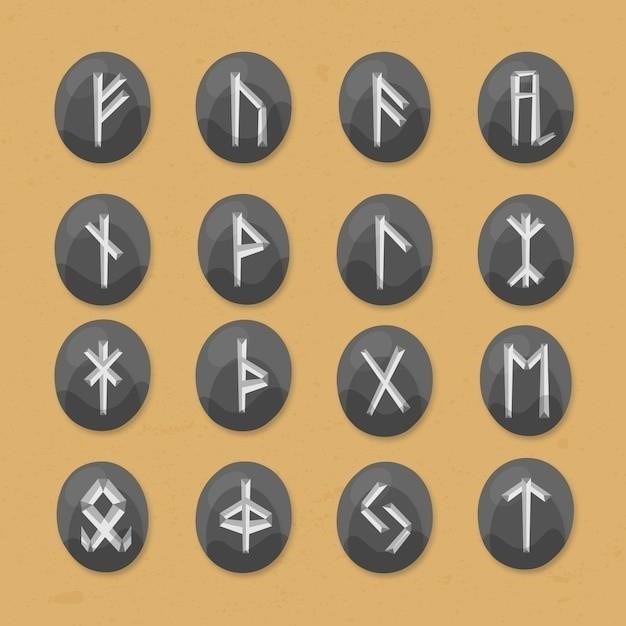Shoei Helmet Size Guide⁚ A Comprehensive Overview
This guide provides a detailed overview of Shoei helmet sizing, crucial for ensuring a safe and comfortable fit․ Accurate measurement techniques are essential for selecting the correct size from Shoei’s comprehensive sizing charts, which utilize both centimeters and inches․ Understanding these charts is key to finding your perfect fit․
Accurate Head Measurement Techniques
Precise head measurement is paramount for a properly fitting Shoei helmet․ Use a soft, flexible tape measure․ Position it horizontally around your head, approximately one inch (2․5cm) above your eyebrows․ This is typically the widest part of your head․ Ensure the tape measure is snug but not overly tight, allowing for a comfortable fit․ Take multiple measurements, moving the tape slightly up and down to find the largest circumference․ Record this measurement; it’s your crucial data point for comparing against Shoei’s size charts․ Remember, accuracy is key to avoiding discomfort or safety compromises․ A slightly snug fit is preferable to one that’s too loose; a helmet that shifts during riding is dangerous․ Inconsistent measurements can lead to an incorrect size selection, so take your time and repeat the process to ensure accuracy․ Consult online resources or videos for visual guidance if needed․
Understanding Shoei’s Sizing Charts
Shoei employs detailed sizing charts to ensure a precise fit for their helmets․ These charts typically present helmet sizes using both centimeters (cm) and inches, catering to various measurement preferences․ Each size corresponds to a specific head circumference range․ It’s crucial to understand that these ranges represent the widest part of your head, measured as described previously․ Pay close attention to the upper and lower limits of each size range to find the best match for your measurement․ Shoei’s charts might vary slightly depending on the specific helmet model, so always refer to the chart provided for the model you are considering․ Some charts might also include additional information regarding the helmet’s interior padding and its adjustability, which can influence the overall fit․ Always cross-reference your measurement with the appropriate chart for the exact helmet style you’re interested in purchasing to ensure the most accurate fit possible․
Interpreting Size Charts⁚ cm vs․ Inches
Shoei helmet size charts often present measurements in both centimeters (cm) and inches․ Understanding the conversion between these units is vital for accurate sizing․ While many are familiar with inches, centimeters are equally important in this context․ Most charts will clearly indicate the size range for each helmet size using both units, side-by-side․ For example, a medium helmet might be listed as 57-58 cm or 22 1/2 ‒ 22 7/8 inches․ If you’re more comfortable with one system over the other, ensure you understand the conversion before making your selection․ Using an online converter or a simple conversion calculation can aid in this process․ It’s recommended to measure your head circumference in both cm and inches to have a direct comparison to the size ranges provided in the chart, reducing the margin for error․ Remember, a precise measurement using the correct method is crucial for achieving the ideal fit․ Double-checking your measurements before selecting your helmet size is always advisable․
Finding Your Perfect Fit
Matching your head measurement to Shoei’s size chart is the first step․ Consider helmet style and personal fit preferences; proper fit is paramount for safety and comfort․
Matching Your Measurement to Shoei Sizes
Once you’ve accurately measured your head circumference, consult Shoei’s official size chart․ These charts typically list sizes in both centimeters (cm) and inches․ Find the measurement closest to your own․ Remember that Shoei offers various helmet models, and each model might have slight variations in its sizing․ Therefore, always refer to the specific size chart for the exact Shoei helmet model you are interested in purchasing․ Don’t solely rely on generic online guides; check the manufacturer’s website or a reputable retailer’s page for the most accurate and up-to-date information․ If your measurement falls between two sizes, it’s generally recommended to choose the larger size to ensure a comfortable and safe fit․ A snug but not overly tight fit is ideal․ Too much pressure can be uncomfortable and potentially dangerous, while a helmet that’s too loose won’t provide adequate protection․ Pay close attention to the details provided by Shoei, and if you are unsure, contact their customer service or a retailer for personalized assistance․
Considering Helmet Style and Fit Preferences
While the head circumference measurement is the primary factor in determining Shoei helmet size, individual preferences and helmet styles also play a significant role․ Shoei offers a range of helmet styles, each with its unique fit characteristics․ For example, a full-face helmet will generally have a different fit compared to an open-face helmet․ Some riders prefer a snugger fit, while others prefer a slightly looser one․ Personal comfort is paramount; a helmet that feels too tight can lead to discomfort and headaches during longer rides, potentially compromising safety due to rider fatigue or distraction․ Conversely, a helmet that’s too loose could shift during an accident, reducing its protective capabilities․ Consider factors like the shape of your head—oval, round, or intermediate—as this can influence how a particular helmet model fits․ Reading online reviews from other users who have similar head shapes and preferences can be beneficial before making a purchase decision․ Remember, the goal is optimal safety and comfort․
The Importance of Proper Helmet Fit
A properly fitted Shoei helmet is crucial for rider safety and comfort․ An ill-fitting helmet can significantly reduce its protective capabilities․ A helmet that’s too large might shift during a crash, leaving vulnerable areas exposed․ This can lead to serious head injuries․ Conversely, a helmet that’s too tight can restrict blood flow, causing discomfort, headaches, and even impairing concentration․ Proper fit ensures the helmet sits securely on your head without excessive pressure points․ It should feel snug but not constricting, allowing for a full range of head movement․ The chin strap should fasten comfortably without excessive tightness․ The helmet should sit level on your head, with the eye port positioned correctly to provide optimal vision․ A well-fitted helmet maximizes its ability to absorb impact forces and protect the rider’s head in the event of an accident․ Investing time in proper measurement and understanding Shoei’s sizing chart is essential for ensuring optimal protection and a comfortable riding experience․
Troubleshooting and FAQs
This section addresses common Shoei helmet sizing issues, explains helmet liner adjustability, and guides you on contacting Shoei or retailers for assistance with fit-related problems․
Addressing Common Sizing Issues
One frequent problem is selecting a helmet too large, leading to excessive movement during riding and compromised safety․ Conversely, a helmet that’s too small restricts blood flow, causing discomfort and even headaches․ Many users report difficulty in initially determining their correct Shoei size due to variations in head shape and the specific helmet model․ Remember that even within a size range (e․g․, Medium), there are subtle differences in fit among various Shoei helmet styles․ The X-Fourteen, for instance, might fit differently than the Neotec․ Shoei’s own size chart is the best starting point, but personal preference and the feel of the helmet on your head are paramount․ If you experience pressure points or discomfort after a short test, it might indicate an incorrect size․ Don’t hesitate to seek advice from experienced riders or consult a reputable retailer specializing in Shoei helmets for professional fitting assistance․ Their expertise can help ensure the optimal fit for your head shape and riding style․
Understanding Helmet Liner Adjustability
Many Shoei helmets feature adjustable cheek pads and crown pads, offering a degree of customization to fine-tune the fit․ These pads, often made from comfortable, breathable materials, can be replaced or adjusted to achieve a more precise fit․ Check your specific Shoei helmet’s manual for instructions on pad removal and adjustment․ Replacing worn or damaged pads can also significantly improve comfort and hygiene․ While liner adjustability provides some flexibility, it doesn’t compensate for choosing a fundamentally incorrect helmet size․ The primary size should be determined initially based on accurate head measurements and Shoei’s sizing chart․ Adjusting the liner should be considered a secondary step to refine the fit after selecting the appropriate shell size․ Remember, even with adjustable liners, a helmet that’s too large or small will remain unsafe and uncomfortable․ A properly fitted helmet should feel snug but not constricting, allowing for a comfortable and secure fit without excessive pressure points․
Contacting Shoei or Retailers for Assistance
If you encounter difficulties determining your Shoei helmet size or experience fitting issues despite following the guide, seeking assistance from Shoei directly or authorized retailers is recommended․ Shoei’s official website often provides contact information and resources to help customers․ Many retailers specializing in motorcycle gear offer expert advice and fitting services, ensuring you choose the right size and model․ Contacting them can offer personalized guidance based on your specific head shape and preferences․ Don’t hesitate to describe your challenges or uncertainties; a helpful retailer can often resolve sizing issues․ They might have additional sizing charts or tools to assist․ Remember, obtaining the correct fit is paramount for safety and comfort․ Professional assistance can prevent purchasing an ill-fitting helmet, potentially enhancing your riding experience and ensuring optimal protection․
Additional Resources
Supplement your research with official Shoei websites and support documentation․ Explore third-party retailer size guides for comparative information and further assistance in finding the perfect fit․
Official Shoei Website and Support
The official Shoei website is an invaluable resource for accurate and up-to-date sizing information․ Their website often features detailed sizing charts specific to each helmet model, ensuring you find the perfect fit for your head shape and size․ Look for downloadable PDF guides or interactive tools that may allow you to input your measurements for a suggested size․ Beyond size charts, Shoei’s website or customer service may offer additional guidance on fit and comfort, addressing specific questions you might have about liner adjustability or the fit of various helmet styles․ Contacting their customer support team directly can provide personalized assistance in navigating the sizing process and resolving any concerns․
Third-Party Retailer Size Guides
Many online and brick-and-mortar retailers selling Shoei helmets provide their own size guides․ These guides often mirror Shoei’s official charts but may offer additional visual aids or explanations․ While generally reliable, it’s crucial to remember that these third-party guides are interpretations of Shoei’s data and may not always be perfectly consistent․ Always cross-reference the retailer’s information with Shoei’s official website for the most accurate sizing details․ Retailers may also offer customer reviews or feedback sections where users discuss their experiences with fit and sizing for specific Shoei models․ This peer-to-peer information can be helpful in making your decision․ Note that retailer return policies vary; confirm their policies before purchasing to ensure a hassle-free exchange if the initial size is unsuitable․

